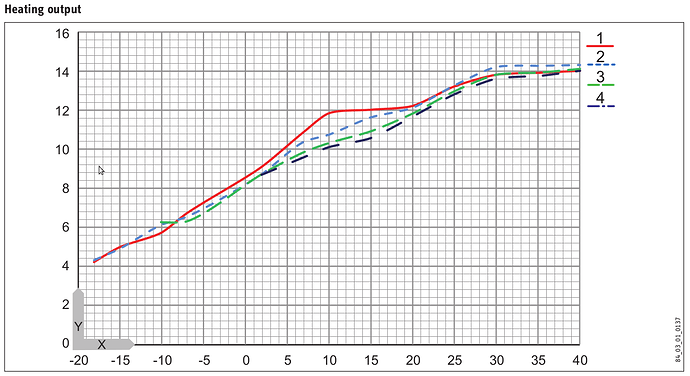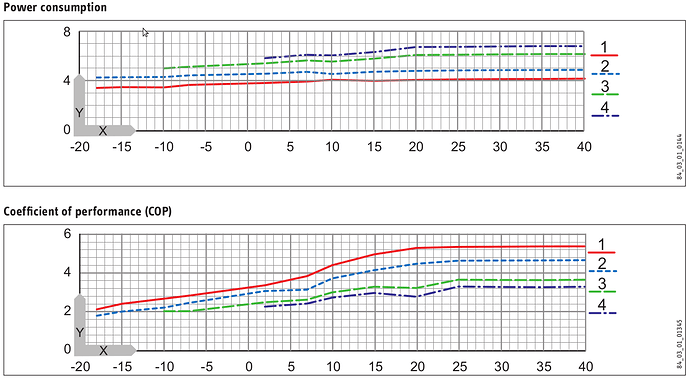I’ve posted quite a few times on this subject.
It doesn’t matter if the outside temperature is below zero; drop the temperature of a cubic metre of air by 10° and you get almost the same heat out whether it starts at 20°C or -20°C, and there are systems which work down to -20 and below but there are some considerations.
One is that efficiency does drop off as the temperature of the intake air drops - the worst is probably with intake air just above freezing when ice build up on the heat exchanger is a real problem. Systems usually have a way to deal with this such as an auxiliary heater, ours reverses the heat exchanger to draw heat from the heat store but whatever approach is taken it reduces the heat output from the system - and as Simon observes, just when you most need the system to produce heat not waste it defrosting itself.
I suspect that many are under-specified, ours has a nominal output of 16kW which is already low for the size of property but drops quite quickly if the intake air is below 5-10°C. Had the system been sized so that enough heat was generated at an intake of -10 or so it would have worked better but, I suspect, have been even more expensive (it was installed by the previous owner in about 2008 at a cost of about 15k€).
Me, for one.
Hmmmm, well, yes but even though mine is underpowered there is still a COP of 2-2.5 even with intake air at -15°C so it is better than electricity alone.
It is worth spending a little time to understand how they work to better understand the limitations.
The “Hors Gel” system on yours probably does something similar to the “Hors Gel” setting on mine - almost nothing! Basically it amounts to little more than keeping the pump running to circulate water through the heat exchanger - keeping it moving will help stop it freezing but if it is cold enough for long enough it will eventually freeze. In fact on mine if the thermal store temperature drops low enough it will simply stop the pump thus removing even the minimal protection afforded by keeping the water in the system moving.
So, essentially, you are right - you need to leave the system on to ensure there is enough heat to allow frost protection. I now leave ours with the room temp set at 11-13°C when the house is shut up for Jan & Feb.
A further important point - flow temperatures are generally less than 60°C and the higher you go the less efficient the heat pump, which means that older radiators are much less suited, underfloor systems work better with low flow temperatures and are much better for heat pump systems.
All that said while I was very antagonistic to our system at the beginning I have grown to realise that it is probably the least worst option - oil is on the way out, gas means inconvenient storage tanks, and wood pellet systems can be distinctly temperamental and all require regular deliveries of fuel. Our house is not well suited to a log burner (we have an inset burner but a lot of the heat goes straight up the chimney).
A ground source system would probably have been better but not everyone has the room to install the piping.
What I would say is that if you are considering an air source system make sure that you see, and understand, the data on heat output vs ambient & flow temperatures in conjunction with weather data for an average and worst case winter to make sure you will have enough heat output - not just looking at the headline figure which is almost certainly at an ambient temp above 10°C and will not represent the performance which you will get when you need it the most.






